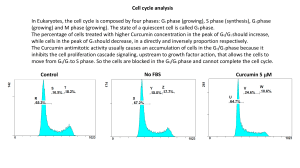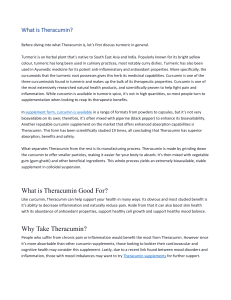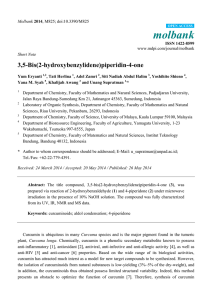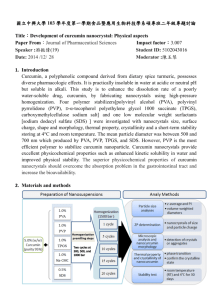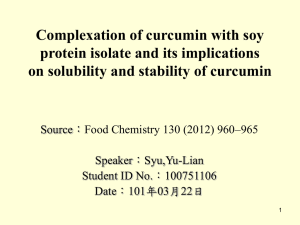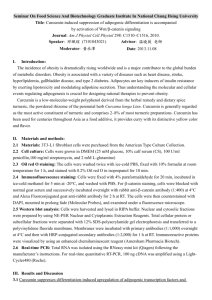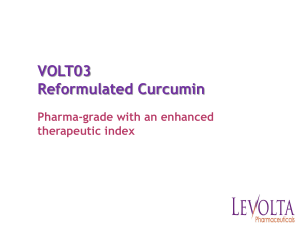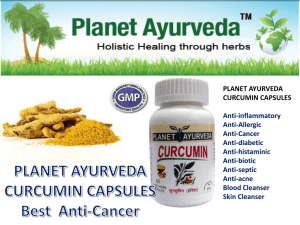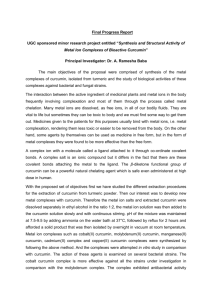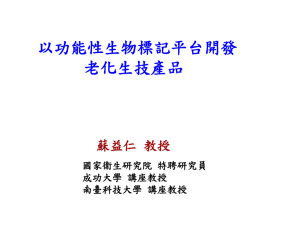Polyphenols modulation of angiogenesis and obesity - GT-Plus
advertisement
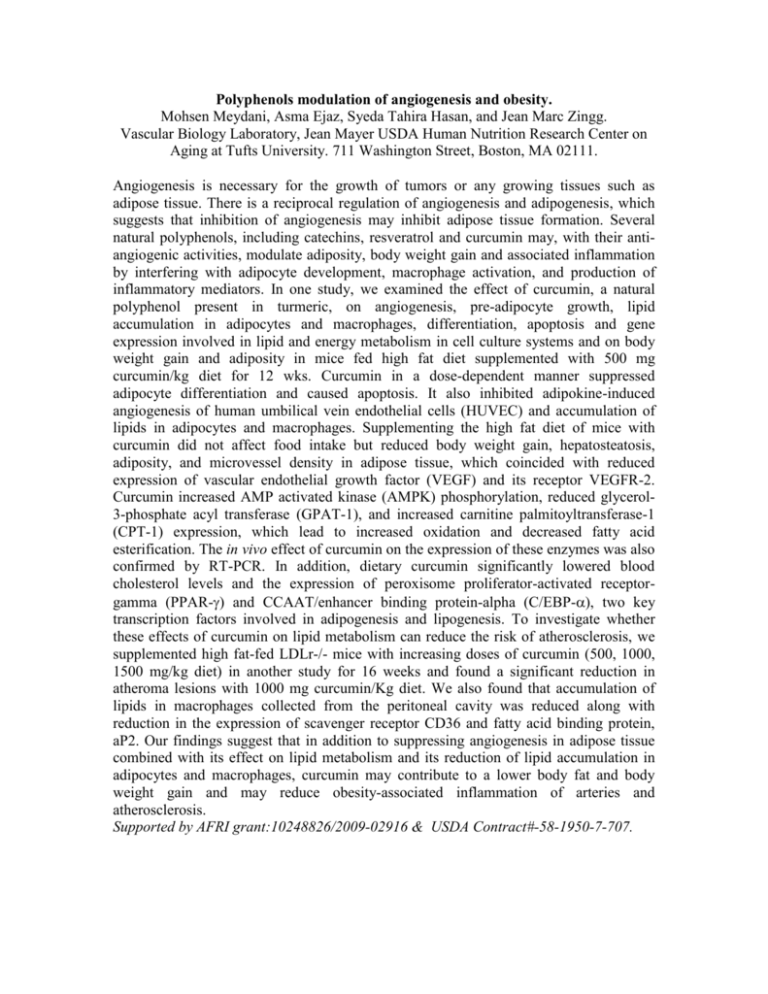
Polyphenols modulation of angiogenesis and obesity. Mohsen Meydani, Asma Ejaz, Syeda Tahira Hasan, and Jean Marc Zingg. Vascular Biology Laboratory, Jean Mayer USDA Human Nutrition Research Center on Aging at Tufts University. 711 Washington Street, Boston, MA 02111. Angiogenesis is necessary for the growth of tumors or any growing tissues such as adipose tissue. There is a reciprocal regulation of angiogenesis and adipogenesis, which suggests that inhibition of angiogenesis may inhibit adipose tissue formation. Several natural polyphenols, including catechins, resveratrol and curcumin may, with their antiangiogenic activities, modulate adiposity, body weight gain and associated inflammation by interfering with adipocyte development, macrophage activation, and production of inflammatory mediators. In one study, we examined the effect of curcumin, a natural polyphenol present in turmeric, on angiogenesis, pre-adipocyte growth, lipid accumulation in adipocytes and macrophages, differentiation, apoptosis and gene expression involved in lipid and energy metabolism in cell culture systems and on body weight gain and adiposity in mice fed high fat diet supplemented with 500 mg curcumin/kg diet for 12 wks. Curcumin in a dose-dependent manner suppressed adipocyte differentiation and caused apoptosis. It also inhibited adipokine-induced angiogenesis of human umbilical vein endothelial cells (HUVEC) and accumulation of lipids in adipocytes and macrophages. Supplementing the high fat diet of mice with curcumin did not affect food intake but reduced body weight gain, hepatosteatosis, adiposity, and microvessel density in adipose tissue, which coincided with reduced expression of vascular endothelial growth factor (VEGF) and its receptor VEGFR-2. Curcumin increased AMP activated kinase (AMPK) phosphorylation, reduced glycerol3-phosphate acyl transferase (GPAT-1), and increased carnitine palmitoyltransferase-1 (CPT-1) expression, which lead to increased oxidation and decreased fatty acid esterification. The in vivo effect of curcumin on the expression of these enzymes was also confirmed by RT-PCR. In addition, dietary curcumin significantly lowered blood cholesterol levels and the expression of peroxisome proliferator-activated receptorgamma (PPAR-) and CCAAT/enhancer binding protein-alpha (C/EBP-), two key transcription factors involved in adipogenesis and lipogenesis. To investigate whether these effects of curcumin on lipid metabolism can reduce the risk of atherosclerosis, we supplemented high fat-fed LDLr-/- mice with increasing doses of curcumin (500, 1000, 1500 mg/kg diet) in another study for 16 weeks and found a significant reduction in atheroma lesions with 1000 mg curcumin/Kg diet. We also found that accumulation of lipids in macrophages collected from the peritoneal cavity was reduced along with reduction in the expression of scavenger receptor CD36 and fatty acid binding protein, aP2. Our findings suggest that in addition to suppressing angiogenesis in adipose tissue combined with its effect on lipid metabolism and its reduction of lipid accumulation in adipocytes and macrophages, curcumin may contribute to a lower body fat and body weight gain and may reduce obesity-associated inflammation of arteries and atherosclerosis. Supported by AFRI grant:10248826/2009-02916 & USDA Contract#-58-1950-7-707.
